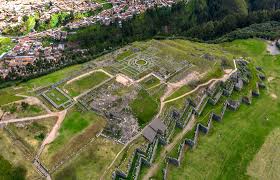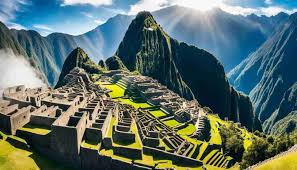Peru is a land of rich history and breathtaking landscapes, with ancient wonders that continue to captivate travelers from around the world. At the heart of this cultural treasure trove lies Machu Picchu, the iconic Incan citadel perched high in the Andes. Known for its stunning architecture and mysterious origins, Machu Picchu is undoubtedly one of the most famous archaeological sites on the planet. But while Machu Picchu is the most recognized of Peru’s ancient wonders, the country offers many other awe-inspiring sites that deserve attention.
From hidden temples to lesser-known ruins, Peru’s history spans thousands of years and encompasses various cultures that have left their mark on the land. In this post, we’ll delve into the beauty and significance of Machu Picchu, explore other ancient wonders of Peru, and guide you through the experiences that make Peru a must-visit destination for history and adventure enthusiasts.
Machu Picchu: The Jewel of the Incan Empire
Undoubtedly the crown jewel of Peru’s historical sites, Machu Picchu is a marvel of engineering and a symbol of the Incan Empire. Built in the 15th century, this mountaintop fortress was abandoned for centuries and remained hidden from the outside world until its rediscovery in 1911. Today, it stands as one of the Seven Wonders of the Modern World and attracts millions of visitors each year.
The journey to Machu Picchu begins in the town of Aguas Calientes, followed by a scenic train ride that takes you through lush valleys and towering mountains. Upon arriving, visitors are greeted by the awe-inspiring sight of this ancient city, with its perfectly aligned stone structures, terraced hillsides, and breathtaking views. Exploring the site offers a glimpse into Inca life, from the Temple of the Sun to the Intihuatana stone, which is believed to have been used for astronomical observations.
The Sacred Valley: A Glimpse into Incan Culture
Beyond Machu Picchu, the Sacred Valley of the Incas is home to other incredible archaeological sites that offer insights into ancient Peruvian life. The Sacred Valley is a lush, fertile region that stretches from the town of Pisac to Ollantaytambo, lined with Inca ruins and traditional villages.
Pisac is known for its impressive Inca terraces and the Pisac Market, where travelers can shop for local handicrafts and food. Ollantaytambo, a charming town that still retains its Incan layout, is home to the Ollantaytambo Ruins, which feature massive terraces and ceremonial platforms. These sites, alongside the many other lesser-known ruins in the Sacred Valley, provide a more intimate and immersive experience into the ancient world of the Incas.
Sacsayhuamán: The Mysterious Fortress of Cusco

Another fascinating site near Machu Picchu is Sacsayhuamán, an ancient Incan fortress located just outside of Cusco, the former capital of the Inca Empire. The massive stone walls of Sacsayhuamán are considered some of the finest examples of Incan masonry, with stones so precisely cut and fitted together that no mortar is required. The purpose of Sacsayhuamán remains somewhat of a mystery, but it’s believed to have served both military and religious functions.
Visiting Sacsayhuamán provides a glimpse into the architectural prowess of the Inca civilization. The site offers stunning panoramic views of Cusco and the surrounding mountains, making it a favorite spot for photography. It’s also a place of cultural significance, as the annual Inti Raymi festival, celebrating the Incan Sun God, is held here every June.
Nazca Lines: A World of Mystery in the Desert
While Machu Picchu is the most famous archaeological site in Peru, there are other wonders that offer unique experiences, such as the Nazca Lines. These ancient geoglyphs are etched into the desert floor and date back to around 500 BC. The Nazca Lines depict a variety of animals, plants, and geometric shapes, and their purpose remains a subject of debate among historians and archaeologists.
The best way to view the Nazca Lines is from the air. Small planes fly over the desert, giving passengers a bird’s-eye view of these giant figures, which are best appreciated from above. The mystery surrounding the creation and meaning of the Nazca Lines only adds to their allure, making this a must-see destination for those intrigued by ancient cultures.
Choquequirao: The Hidden Sister of Machu Picchu
For those seeking an off-the-beaten-path adventure, Choquequirao is often referred to as the “sister city” of Machu Picchu. Located high in the Peruvian Andes, Choquequirao is a remote Inca site that is only accessible by foot. The trek to Choquequirao is challenging, but for those who make the journey, the reward is an incredible, less-visited archaeological site surrounded by lush jungle and dramatic mountain views.
The site itself features large terraced areas, impressive stone structures, and ceremonial spaces, much like Machu Picchu. However, since Choquequirao is not as well-known, it offers a more peaceful and intimate experience. For adventurous travelers looking to explore Inca history away from the crowds, Choquequirao is a hidden gem that’s worth the effort.
Conclusion: Peru’s Rich Cultural Heritage Awaits
From the world-famous Machu Picchu to the lesser-known wonders like Choquequirao and the Nazca Lines, Peru is home to some of the most fascinating archaeological sites in the world. These ancient wonders not only showcase the brilliance of the Inca civilization but also offer a deeper connection to the rich cultural heritage of Peru.
For history enthusiasts, adventurers, and those seeking to explore the wonders of the past, Peru offers an unforgettable journey through time. Whether you’re hiking to the top of Machu Picchu, exploring the Sacred Valley, or marveling at the Nazca Lines, these ancient sites promise to leave you with memories that will last a lifetime.
